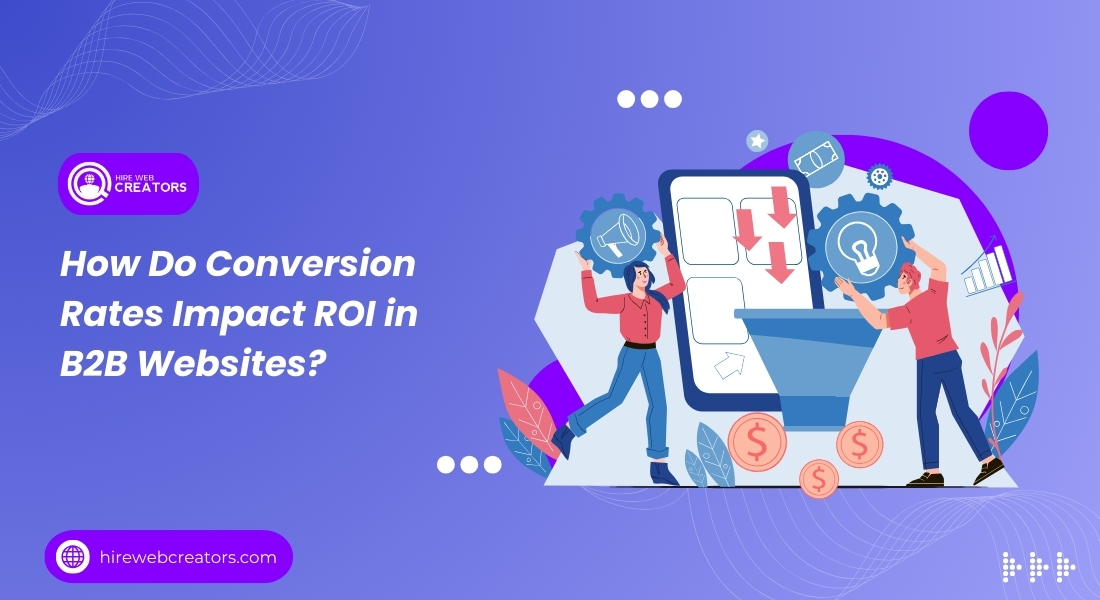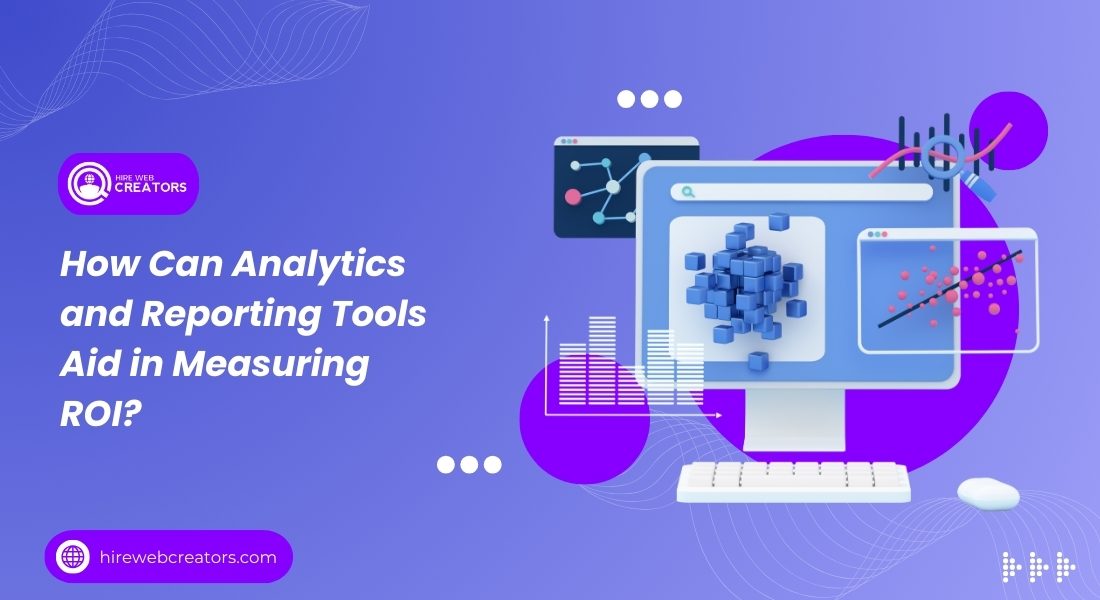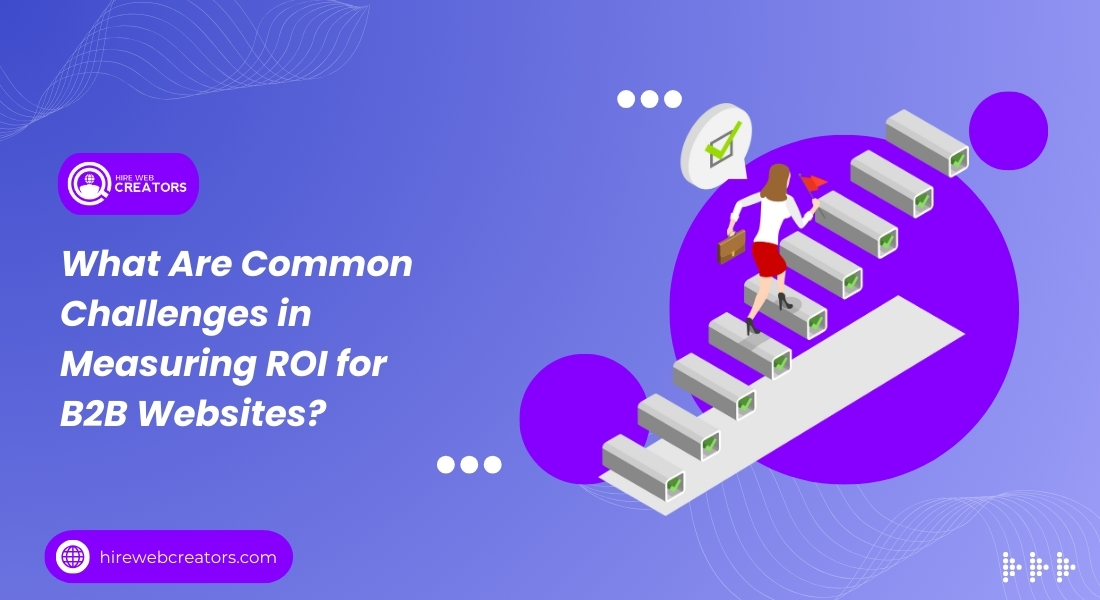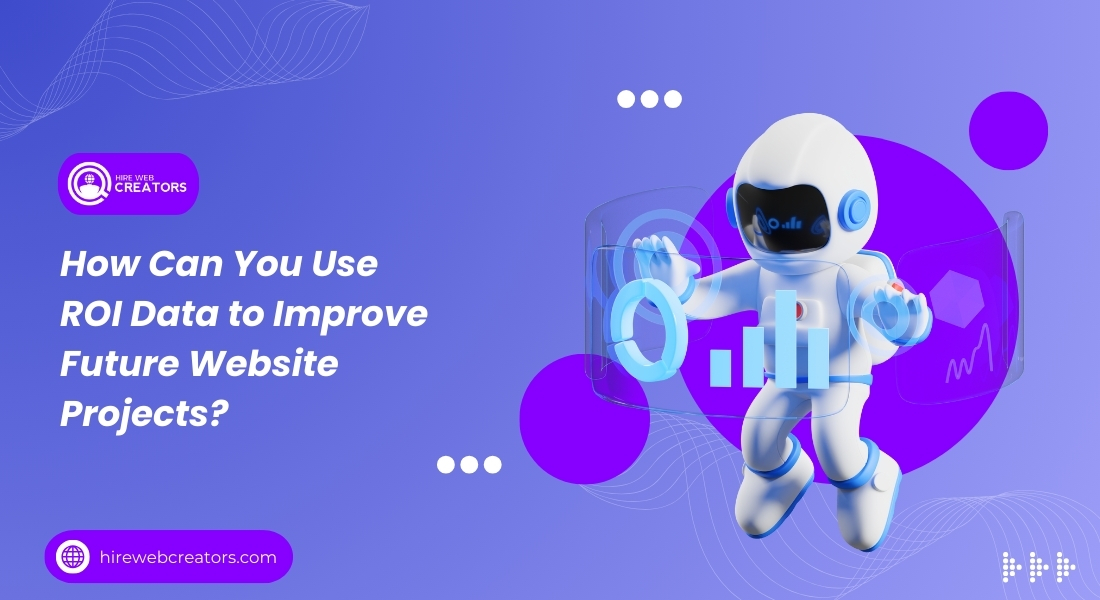

Measuring ROI B2B Websites: 7 Powerful Metrics for Explosive Growth
Want to master measuring ROI B2B websites? Discover expert tips and actionable insights to boost your B2B website’s success and optimize your project’s ROI effectively.
Understanding the return on investment (ROI) for B2B website development is crucial for maximizing the value of your projects. By effectively measuring ROI, businesses can not only gauge the success of their web initiatives but also make informed decisions that drive future growth. This blog delves into the essential metrics and strategies for evaluating ROI, offering a comprehensive guide to help you navigate the complexities of web development investments.
Explore key techniques for tracking and improving your B2B website’s performance. From defining clear objectives to leveraging advanced analytics tools, this guide provides actionable insights that can enhance your project’s outcomes. Whether you’re aiming to refine your development approach or demonstrate the value of your website to stakeholders, this blog will equip you with the knowledge needed to achieve and exceed your ROI goals.
What is ROI in the Context of B2B Website Development?
Return on Investment (ROI) is a fundamental metric in evaluating the success of B2B website development projects. ROI measures the profitability of an investment relative to its cost, providing crucial insights into how effectively resources are utilized. In the context of B2B websites, measuring ROI involves analyzing various financial and performance indicators to determine whether the development costs are justified by the returns achieved.

When discussing ROI for B2B websites, it’s important to understand the components that contribute to a comprehensive assessment. The primary keyword, Measuring ROI B2B websites, encompasses several aspects:
- Revenue Impact: Assessing how the website contributes to increased revenue through enhanced customer engagement, lead generation, and conversion rates.
- Cost Efficiency: Evaluating how well the website’s development and maintenance costs are managed compared to the benefits it delivers.
- Long-Term Value: Understanding the sustained benefits the website provides over time, including brand value and customer loyalty.
For B2B websites, measuring ROI involves more than just tracking immediate financial returns. It requires a holistic view of how the website supports broader business objectives, such as improving operational efficiency and expanding market reach. Measuring ROI B2B websites thus becomes a multi-faceted process, integrating financial metrics with qualitative factors like user satisfaction and competitive positioning.
A well-developed B2B website should ideally contribute to business growth in several key areas:
- Lead Generation: Effective B2B websites generate quality leads that can be nurtured into valuable business relationships. The ROI is measured by the volume and quality of leads generated relative to the investment made in website development.
- Customer Acquisition and Retention: An efficient website helps in acquiring new customers and retaining existing ones by providing valuable content and a seamless user experience. The ROI for these aspects is assessed by tracking changes in customer acquisition costs and retention rates.
- Brand Perception: The website’s role in shaping brand perception and enhancing credibility is another crucial factor. Measuring ROI involves evaluating improvements in brand recognition and trust that can be attributed to the website’s design and functionality.
What Key Metrics Should Be Used to Measure ROI?
Identifying the right metrics is crucial for measuring ROI B2B websites effectively. The primary focus on measuring ROI B2B websites underscores the need to track specific indicators that reflect the website’s performance and contribution to business goals. Key metrics provide valuable insights into how well the website is performing and whether it is delivering the expected returns on investment.
Several metrics are essential when evaluating ROI for B2B websites. These include:
Conversion Rate: This metric measures the percentage of website visitors who take a desired action, such as filling out a contact form or making a purchase. High conversion rates indicate that the website is effectively engaging visitors and driving them toward business goals.
Customer Acquisition Cost (CAC): CAC calculates the total cost of acquiring a new customer through the website, including marketing and development expenses. Lower CAC values suggest a more efficient website in terms of generating new business.
Average Revenue Per User (ARPU): ARPU measures the average revenue generated per user or customer. This metric helps assess the website’s effectiveness in driving higher-value transactions and maximizing revenue.
Analyzing these metrics provides a comprehensive view of how well a B2B website is performing relative to its costs. Measuring ROI B2B websites involves not only tracking these key indicators but also interpreting them in the context of broader business objectives. For instance, improvements in conversion rates and reductions in CAC directly impact the overall ROI by enhancing revenue generation and cost efficiency.
Understanding and tracking these key metrics ensures that businesses can make informed decisions about their website development strategies. By focusing on the most relevant performance indicators, companies can effectively measure the ROI of their B2B websites and enhance their investment outcomes. and optimize their digital investments to achieve better results.
How Can You Define Clear Objectives for Your B2B Website?
Setting clear objectives is a fundamental step in measuring ROI for B2B websites. The primary keyword, Measuring ROI B2B websites, highlights the need to establish specific goals that align with the overall business strategy. Defining clear objectives ensures that the website’s performance can be accurately assessed against predefined targets.
Effective objectives for B2B websites should be:
- Specific: Goals should be precise and clearly defined, such as increasing lead generation by a certain percentage or improving user engagement metrics.
- Measurable: Objectives must be quantifiable to track progress and determine whether they are being met. For example, setting a target for the number of new leads generated or the percentage increase in conversion rates.
- Achievable: Objectives should be realistic and attainable based on available resources and current market conditions. Setting achievable goals ensures that the website can deliver tangible results within a given timeframe.
Measuring ROI B2B websites relies heavily on the clarity of these objectives. When goals are well-defined, it becomes easier to evaluate the website’s performance and identify areas for improvement. Clear objectives also help in aligning the website’s development and marketing strategies with broader business goals, leading to more effective and targeted efforts.
By establishing specific, measurable, and achievable objectives, businesses can create a focused approach to their B2B website development. This approach not only enhances the ability to measure ROI accurately but also ensures that the website contributes effectively to the company’s overall success.
What Role Does User Experience Play in ROI Calculation?
User experience (UX) is a critical factor in calculating ROI for B2B websites. The primary keyword, Measuring ROI B2B websites, reflects the importance of UX in determining how effectively a website meets user needs and contributes to business success. A positive user experience can significantly influence ROI by enhancing visitor engagement and increasing conversion rates.
Key aspects of UX that impact ROI include:
- Website Usability: An easy-to-navigate website improves user satisfaction and reduces friction points that might otherwise lead to abandonment. Better usability leads to higher engagement and more successful interactions.
- Loading Speed: Fast-loading pages are crucial for retaining visitors and reducing bounce rates. Slow-loading sites can frustrate users and lead to lost opportunities, negatively impacting ROI.
- Mobile Optimization: With an increasing number of users accessing websites via mobile devices, ensuring that the site is mobile-friendly is essential. A well-optimized mobile experience contributes to better user engagement and higher conversion rates.
Measuring ROI B2B websites involves evaluating how UX elements affect overall performance. Improving UX can lead to increased visitor satisfaction, higher conversion rates, and ultimately better ROI. By focusing on creating a seamless and enjoyable user experience, businesses can enhance their website’s effectiveness and achieve greater returns on their digital investments.
Prioritizing user experience in B2B website development ensures that the site not only attracts visitors but also converts them into customers. A strong UX strategy contributes to higher ROI by driving engagement and fostering positive interactions.
How Do Conversion Rates Impact ROI in B2B Websites?
Conversion rates play a pivotal role in measuring ROI for B2B websites. The primary keyword, Measuring ROI B2B websites, emphasizes the significance of conversion rates as a key indicator of how well the website is achieving its goals. Higher conversion rates directly impact ROI by translating website visits into valuable business outcomes.

Conversion rates can be influenced by various factors, including:
- Call-to-Action (CTA) Effectiveness: Well-designed CTAs encourage users to take desired actions, such as requesting a demo or downloading a white paper. Effective CTAs can lead to higher conversion rates and better ROI.
- Content Quality: Engaging and relevant content that addresses user needs and pain points can drive more conversions. High-quality content helps in building trust and persuading visitors to act.
- Form Simplicity: Simplified and user-friendly forms reduce friction and make it easier for users to complete desired actions. This can lead to higher conversion rates and improved ROI.
Measuring ROI B2B websites involves analyzing how conversion rates impact overall returns. By optimizing factors that influence conversion rates, businesses can enhance the effectiveness of their websites and achieve better financial outcomes. Monitoring conversion rates provides valuable insights into the website’s performance and helps in making data-driven improvements.
A focus on improving conversion rates is essential for maximizing ROI in B2B websites. Effective strategies to boost conversions can lead to increased revenue, lower customer acquisition costs, and overall higher returns on investment.
What Tools and Technologies Can Help Measure ROI?
Utilizing the right tools and technologies is crucial for accurately measuring ROI for B2B websites. The primary keyword, Measuring ROI B2B websites, highlights the importance of leveraging advanced tools to track performance metrics and gain actionable insights. These tools help businesses analyze data, make informed decisions, and optimize their websites for better returns.
Essential tools and technologies for measuring ROI include:
- Google Analytics: A powerful tool for tracking website traffic, user behavior, and conversion metrics. Google Analytics provides detailed reports on visitor interactions and helps in assessing the effectiveness of different strategies.
- Heatmap Tools: Tools like Hotjar or Crazy Egg offer visual insights into user behavior by showing where visitors click and how they navigate the site. Heatmaps help in understanding user engagement and identifying areas for improvement.
- Marketing Automation Platforms: Platforms such as HubSpot or Marketo facilitate tracking and analyzing marketing efforts, lead generation, and customer interactions. These tools provide comprehensive data on the ROI of various marketing activities.
Measuring ROI B2B websites effectively requires integrating these tools to gather and analyze relevant data. By using advanced technologies, businesses can gain a deeper understanding of their website’s performance and make data-driven decisions to enhance ROI. The right tools enable accurate tracking of metrics, improved analysis, and better optimization of digital investments.
Implementing these tools and technologies helps in obtaining precise measurements of ROI and provides valuable insights for refining B2B website strategies. Leveraging technology effectively ensures that businesses can achieve better returns on their website investments.
How Can You Calculate the Cost of B2B Website Development?
Calculating the cost of B2B website development is essential for measuring ROI effectively. The primary keyword, Measuring ROI B2B websites, underscores the need to accurately determine the costs associated with developing and maintaining a website. Understanding these costs allows businesses to evaluate the financial performance of their web projects and ensure they are getting value for their investment.
Key components of website development costs include:
- Design and Development: Expenses related to creating the website’s design and functionality. This includes costs for web designers, developers, and any custom features or integrations.
- Content Creation: Costs for producing high-quality content such as text, images, and videos. Effective content creation is crucial for engaging visitors and supporting business objectives.
- Maintenance and Support: Ongoing costs for maintaining the website, including updates, security, and technical support. Regular maintenance ensures the website remains functional and up-to-date.
Measuring ROI B2B websites involves calculating these costs and comparing them to the benefits achieved. Accurate cost calculation helps in determining the overall ROI by providing a clear picture of the investment required to achieve specific outcomes. Understanding these expenses enables businesses to make informed decisions about their website development and optimization strategies.
Calculating the total cost of B2B website development is critical for assessing the return on investment. By breaking down costs and evaluating them against performance metrics, companies can gain insights into the value delivered by their website and make strategic adjustments as needed.
What Methods Are Effective for Tracking ROI Over Time?
Tracking ROI over time is essential for evaluating the long-term success of B2B websites. The primary keyword, Measuring ROI B2B websites, emphasizes the need for continuous monitoring and analysis to understand how ROI evolves. Effective tracking methods provide insights into the website’s performance and help in identifying trends and areas for improvement.
Key methods for tracking ROI include:
- Regular Performance Reviews: Conduct periodic reviews of website performance metrics, such as conversion rates, revenue, and user engagement. Regular reviews help in assessing how well the website is meeting its objectives and identifying any necessary adjustments.
- Trend Analysis: Analyzing trends in website data over time to understand changes in user behavior, traffic patterns, and ROI. Trend analysis helps in identifying long-term patterns and making strategic decisions.
- Benchmarking: Comparing the website’s performance against industry benchmarks or past performance. Benchmarking provides context for evaluating ROI and helps in setting realistic goals.
Measuring ROI B2B websites effectively involves using these methods to track and analyze performance over time. Continuous monitoring ensures that businesses can adapt to changing conditions and optimize their websites to achieve better results. By tracking ROI systematically, companies can make data-driven decisions and enhance their digital strategies.
Implementing effective tracking methods allows businesses to maintain a clear understanding of their website’s ROI and make informed adjustments to improve performance and achieve long-term success.
How Can Analytics and Reporting Tools Aid in Measuring ROI?
Analytics and reporting tools are invaluable for measuring ROI in B2B websites. The primary keyword, Measuring ROI B2B websites, highlights the role of these tools in providing detailed insights into website performance and investment returns. Leveraging analytics tools enables businesses to track key metrics, generate reports, and make informed decisions to optimize ROI.

Important analytics and reporting tools include:
- Google Analytics: Offers comprehensive data on website traffic, user behavior, and conversion metrics. Google Analytics helps in tracking the effectiveness of marketing campaigns and understanding user interactions.
- Conversion Tracking Software: Tools like Google Tag Manager or Facebook Ads Manager provide insights into how well different channels and campaigns are driving conversions. This data is crucial for evaluating ROI and adjusting strategies.
- Custom Reporting Solutions: Tailored reporting tools that integrate with various data sources to provide a holistic view of website performance and ROI. Custom reports allow for in-depth analysis and presentation of relevant metrics.
Measuring ROI B2B websites involves utilizing these tools to gather and interpret data effectively. Analytics and reporting tools help in identifying trends, tracking performance, and assessing the impact of various strategies on ROI. By using these tools, businesses can gain a deeper understanding of their website’s success and optimize their digital investments for better returns.
Harnessing the power of analytics and reporting tools ensures accurate measurement of ROI and provides actionable insights for improving B2B website performance.
What Are Common Challenges in Measuring ROI for B2B Websites?
Measuring ROI for B2B websites presents several challenges that can impact the accuracy and effectiveness of assessments. The primary keyword, Measuring ROI B2B websites, highlights these challenges and the need for strategies to address them. Understanding these obstacles helps businesses navigate the complexities of ROI measurement and make informed decisions.

Common challenges include:
- Attributing Revenue to the Website: Accurately attributing revenue generated to specific website activities can be difficult, especially when multiple touchpoints are involved. Effective attribution models are necessary for understanding how the website contributes to sales.
- Data Integration: Combining data from various sources, such as CRM systems and analytics platforms, can be complex. Integrating data ensures a comprehensive view of ROI but requires effective tools and processes.
- Long Sales Cycles: B2B sales often involve long decision-making processes, making it challenging to measure the immediate impact of website activities on ROI. Tracking long-term metrics and evaluating cumulative effects are essential.
Measuring ROI B2B websites involves overcoming these challenges to obtain accurate assessments. By addressing issues such as revenue attribution, data integration, and long sales cycles, businesses can improve their ROI measurement processes and achieve more reliable results.
Addressing these common challenges ensures that businesses can effectively measure the ROI of their B2B websites and make data-driven decisions to optimize their digital strategies.
How Can You Use ROI Data to Improve Future Website Projects?
Using ROI data to improve future B2B website projects is a critical aspect of optimizing digital investments. The primary keyword, Measuring ROI B2B websites, underscores the value of leveraging ROI insights to enhance future development efforts. Analyzing ROI data helps businesses identify successful strategies and areas for improvement, leading to more effective website projects.

Key ways to use ROI data include:
- Identifying Best Practices: Analyzing successful projects and ROI results helps in identifying effective strategies and best practices. Implementing these practices in future projects can lead to better outcomes and improved ROI.
- Allocating Resources Effectively: ROI data provides insights into which aspects of website development and marketing deliver the best returns. This information helps in allocating resources more effectively and prioritizing high-impact initiatives.
- Enhancing User Experience: Insights from ROI data can reveal areas where user experience improvements are needed. Addressing these areas can lead to higher engagement, better conversion rates, and increased ROI in future projects.
Measuring ROI B2B websites involves using the insights gained to refine and optimize future projects. By leveraging ROI data to inform decisions and strategies, businesses can enhance their website development processes and achieve better results.
Applying ROI insights ensures that future B2B website projects are more aligned with business objectives and contribute to improved returns on investment.
What Are Some Case Studies of Successful ROI Measurement in B2B Web Development?
Examining case studies of successful ROI measurement in B2B web development provides valuable insights and practical examples. The primary keyword, Measuring ROI B2B websites, highlights the importance of learning from real-world examples to understand effective strategies and approaches. Case studies offer concrete evidence of how businesses have achieved significant returns on their website investments.
Notable case studies include:
- Company A: Implemented a comprehensive analytics and conversion tracking strategy, resulting in a 40% increase in lead generation and a 30% reduction in customer acquisition costs. The ROI was significantly enhanced by optimizing key website features and marketing campaigns.
- Company B: Focused on improving user experience and mobile optimization, leading to a 25% increase in conversion rates and a 20% boost in average revenue per user. The investment in UX improvements delivered substantial returns and improved overall ROI.
- Company C: Utilized advanced reporting tools to track and analyze long-term performance, identifying successful marketing strategies and optimizing resource allocation. The ROI measurement approach led to a more efficient use of the budget and better results.
Measuring ROI B2B websites through case studies demonstrates how various strategies and tools can lead to successful outcomes. Learning from these examples helps businesses understand best practices and apply similar approaches to their web development projects.
Case studies provide practical insights and inspiration for achieving better ROI and optimizing B2B website performance.
Conclusion, Measuring the ROI of B2B website development projects is essential for understanding the effectiveness of digital investments and ensuring that business goals are met. By focusing on key metrics such as conversion rates, customer acquisition costs, and average revenue per user, companies can gain valuable insights into how well their websites are performing. Leveraging advanced analytics tools and setting clear, measurable objectives allows businesses to track progress, identify areas for improvement, and make data-driven decisions that enhance overall ROI.
Ultimately, a strategic approach to measuring ROI enables businesses to optimize their B2B websites for better performance and increased returns. By continually analyzing and refining their digital strategies based on ROI data, companies can achieve more significant results, improve user experience, and drive sustained growth. Embracing these practices ensures that investments in B2B website development are justified and deliver the maximum possible value to the organization.
